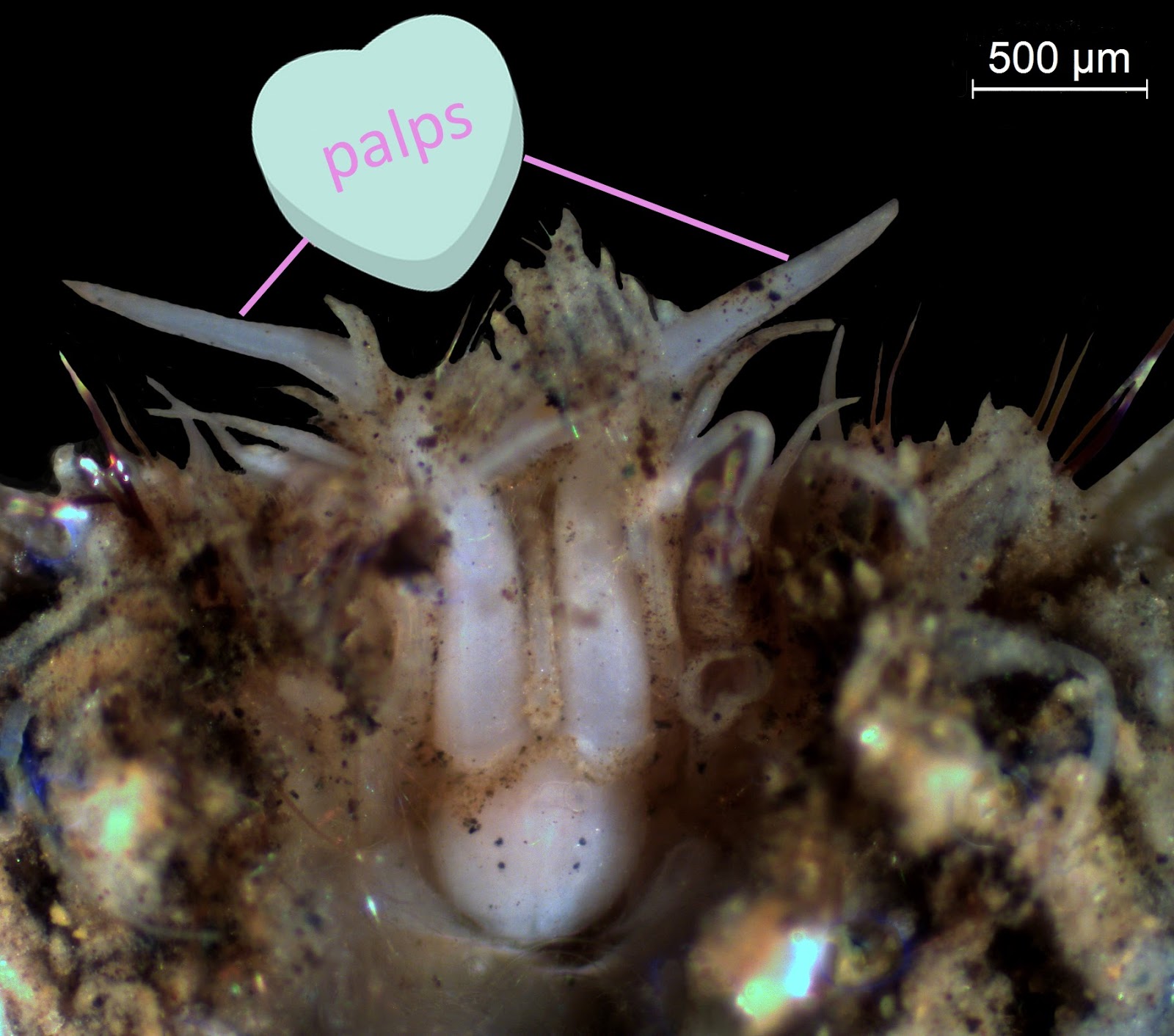This juvenile Aphrodita specimen has had some of its dorsal
Worm and fuzzy
The sea mouse may be brown and fuzzy, but that is about all it shares with its mammalian namesake. Believe it or not, the sea mouse is actually a marine segmented worm, or polychaete! This is more obvious if you flip it over on its back, exposing its segmented underside.
Pulling the wool over your eyes
TOP: Aphrodita japonica captured at 70 m depth, west of Yellow Island, WA. Photo courtesy of Dave Cowles, wallawalla.edu. BOTTOM: A juvenile Aphrodita sp., showing its fleshy, segmented underside.
The Puget Sound species of Aphrodita are typically scavengers, using their palps to search around in the mud for delicious dead things to munch on. However, some species of sea mice found elsewhere in the world are predators, eating other polychaetes and small crabs.
Mouse trap
On the polychaete size scale, the sea mouse is actually pretty hefty, with some growing to about 15 cm (6 inches) long. They live in soft sediments, like mud or sand, generally in shallow depths (to about 120 meters in Puget Sound). Head of an Aphrodita specimen, dorsal
Although we sample in these areas, we rarely see sea mice in our benthic grabs. However, when we do, we have to examine them closely under a microscope to make sure we identify them correctly. We look at the number of segments, the length of the antennae and the type of setae to distinguish the three species we see in Puget Sound: Aphrodita japonica, A. negligens, and A. parva.
Of mice and men
The sea mouse has two kinds of setae:- Long, soft hairs that cover its back.
- Tough, hollow bristles made of chitin that stick out of its parapodia, or feet.
In the shimmering sea mouse, Aphrodita aculeata (which does not occur in Puget Sound, but, rather, in the Atlantic), these bristles are bright iridescent colors, which may be a defense mechanism to scare away potential predators. Close-up of bristles around the bottom of Aphrodita negligens.
A. aculeata’s amazing bristles may have other uses too — for humans! Researchers in Norway have found that the properties which give the worms’ hairs their iridescence also lend themselves very well to nanotechnology — the science of studying and controlling very small things, like atoms. The sea mouse’s bristles can be used as tiny wires (called nanowires) to conduct charged ions, making them potentially useful for building miniature electronic devices such as in-vitro health sensors and computer processors. Talk about a mighty mouse!
Critter of the Month
Our benthic taxonomists, Dany and Angela, are scientists who identify and count the benthic (sediment-dwelling) organisms in our samples as part of our Marine Sediment Monitoring Program. We track the numbers and types of species we see in order to understand the health of Puget Sound and detect changes over time.
Dany and Angela share their discoveries by bringing us a Benthic Critter of the Month. These posts will give you a peek into the life of Puget Sound’s least-known inhabitants. We’ll share details on identification, habitat, life history, and the role each critter plays in the sediment community. Can't get enough benthos? See photos from our Eyes Under Puget Sound collection on Flickr.






